Climate Change: Learn and Help
Climate change is happening—but what exactly is it and what can we do to help? With all the information being tossed around, it can get confusing. But with these six books from our Fall 2016 issue, you can get the information you need and the knowledge to help.
Ecological Governance
Toward a New Social Contract with the Earth
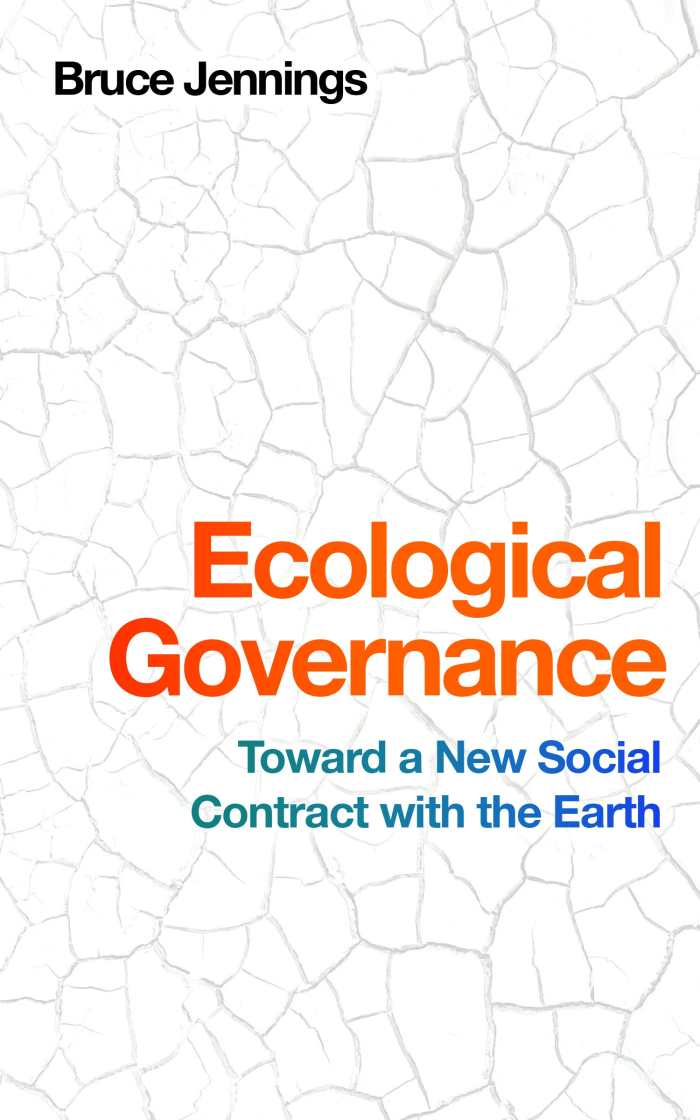
Bruce Jennings
West Virginia University Press
Softcover $18.99 (208pp)
978-1-943665-18-1
Buy: Local Bookstore (Bookshop)
As director of bioethics for the Center for Humans and Nature and adjunct associate professor of health policy at Vanderbilt University, Bruce Jennings writes widely about ethical decision making. In Ecological Governance, he asserts that we must make “a new peace treaty with the planet.”
As the fossil-fuel era draws to a close, it is time to jettison the old model of treating the earth as a commodity, he argues. Rather than an instrumental relationship, the human-nature connection needs to be a trusteeship in which we accept our collective duty to care for and respect the earth. This requires a sense of common moral purpose and an understanding of the interdependence of all life.
By expounding on the historical development of the notion of the social contract—a key element of works by political philosophers Thomas Hobbes, Jean-Jacques Rousseau, and John Locke—Jennings gives his ideas a solid theoretical underpinning. The social contract, a set of accepted rules and roles, was meant to reflect the natural order and be broadly beneficial. Jennings believes that now that we are in the Anthropocene era, we cannot simply keep adapting old ways of doing things; we need to create a whole new economic worldview and “restructure our value priorities.”
Although this weighty ethics text mostly engages with the writings of several philosophers, Jennings is careful to illuminate the everyday implications for laymen. With inventive metaphors drawn from the arts—ranging from Da Vinci’s Vitruvian Man to Hamlet—the book makes a clear case for “a way of being in the world that one can come to take on as lightly and unoppressively as a smile or a style.”
REBECCA FOSTER (August 26, 2016)
Returning North with the Spring
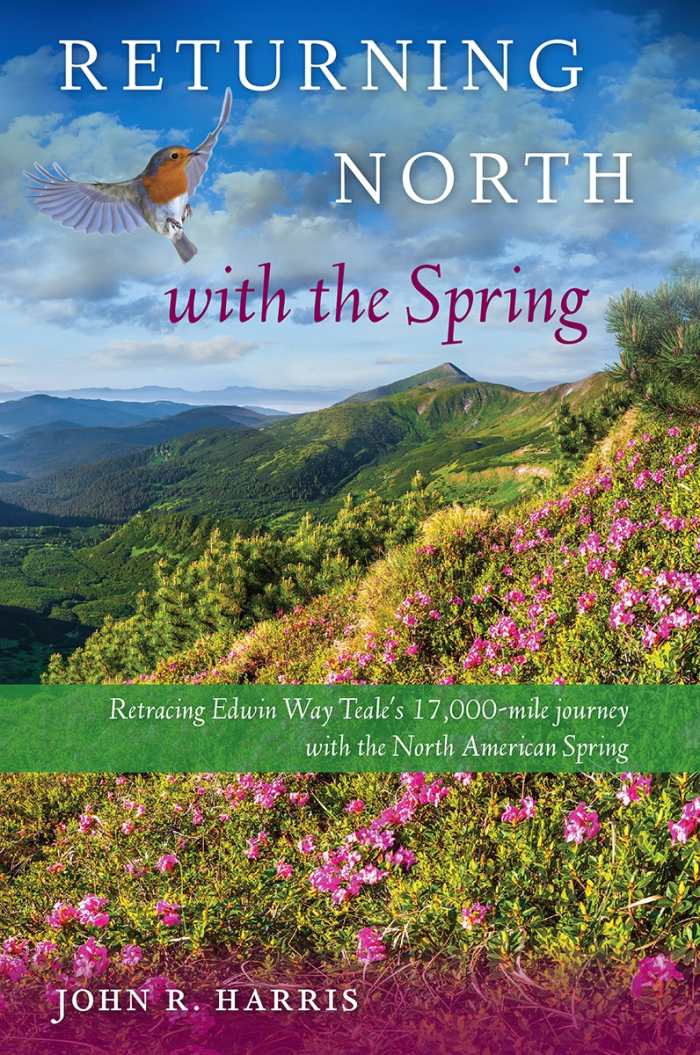
John R. Harris
University Press of Florida
Hardcover $24.95 (232pp)
978-0-8130-6274-7
Buy: Local Bookstore (Bookshop)
In 1947, naturalist Edwin Way Teale and his wife traveled the East Coast from Florida to the Canadian border. Their journey, the subject of North with the Spring, had a dual purpose: scientific—to track the coming of spring and assess the health of the environment; and private—to work through their grief at the death of their son in the Second World War.
For his Returning North with the Spring, John R. Harris, executive director of the Monadnock Institute of Nature, Place, and Culture at Franklin Pierce University, retraced Teale’s journey in 2012, noting how ecosystems had changed in the intervening sixty-five years—whether for better or worse. At Everglades National Park, his first stop, there is much evidence of recent invasive species. The 2,000-strong flocks of plumed waterbirds Teale observed are far diminished, while certain species like the limpkin have simply vanished. Harris visits multiple refuges and learns that Florida’s efforts at restoration are complicated by a sixfold population increase between 1950 and 2010 and the desire to strike a balance between preservation and tourism.
Harris’s later stops include Georgia’s Okefenokee Swamp, South Carolina’s Bulls Island, the Great Smoky Mountains, and the New Jersey Pine Barrens. Historical records he finds at Monticello and Walden Pond suggest that spring now arrives seven to ten days early, an acceleration that climate change will only exacerbate. Back home in New Hampshire, though, he finds a conservation success story: a thriving bald eagle population.
The book is in conversation not only with Teale’s work but with nature writers from Henry David Thoreau to Annie Dillard. An appealingly offbeat blend of travelogue, biography, and environmental study, this book makes conservation personal.
REBECCA FOSTER (August 26, 2016)
Birds in Trouble
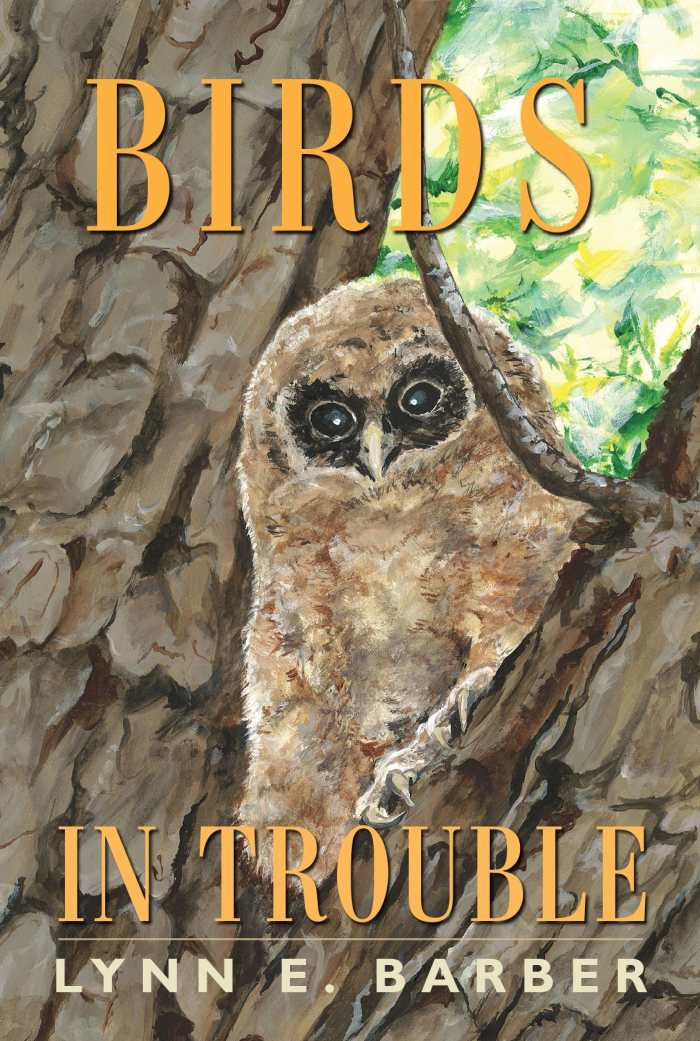
Lynn E. Barber
Texas A & M University Press
Softcover $29.95 (224pp)
978-1-62349-359-2
Buy: Local Bookstore (Bookshop)
For a keen birdwatcher like Lynn E. Barber, birds are a way into learning about current conservation challenges. Her Birds in Trouble profiles many of America’s endangered birds and gives concrete advice on how to help both threatened and common species.
Many rare birds have a limited range, so loss of habitat through pollution and development can be devastating. Whether the wetlands the yellow rail depends on, the grasslands the sage grouse inhabits, the Arctic breeding grounds of the buff-breasted sandpiper, or the ocean health essential to petrels: a thriving environment is key to endangered birds’ survival.
What can ordinary folk do? Barber has plenty of suggestions. Observing bird behavior and submitting sightings through Internet tracking systems is one strategy. Records of a rare bird might help get a location designated as an Important Bird Area. Meanwhile, donating to conservation organizations, volunteering, and writing to officials can make a difference. Even for common bird species, it’s easy to help by providing fresh water, various nourishing foods, and a welcoming habitat right in your backyard.
The core of the book is a set of detailed species accounts. Barber describes each endangered bird and gives notes on its habitat, an account of its decline and current status, and information about special conservation efforts. She uses estimated population figures from the National Audubon Society’s 2007 Watchlist, which categorizes birds as “red” or “yellow” based on their threatened status. Best of all, she makes these records personalized by recounting her interactions with birds from trumpeter swans to prairie chickens. As a birdwatcher who has been based in several states, she knows her subject deeply and advocates for endangered birds zealously.
REBECCA FOSTER (August 26, 2016)
The Once and Future Ocean
Notes Toward a New Hydraulic Society
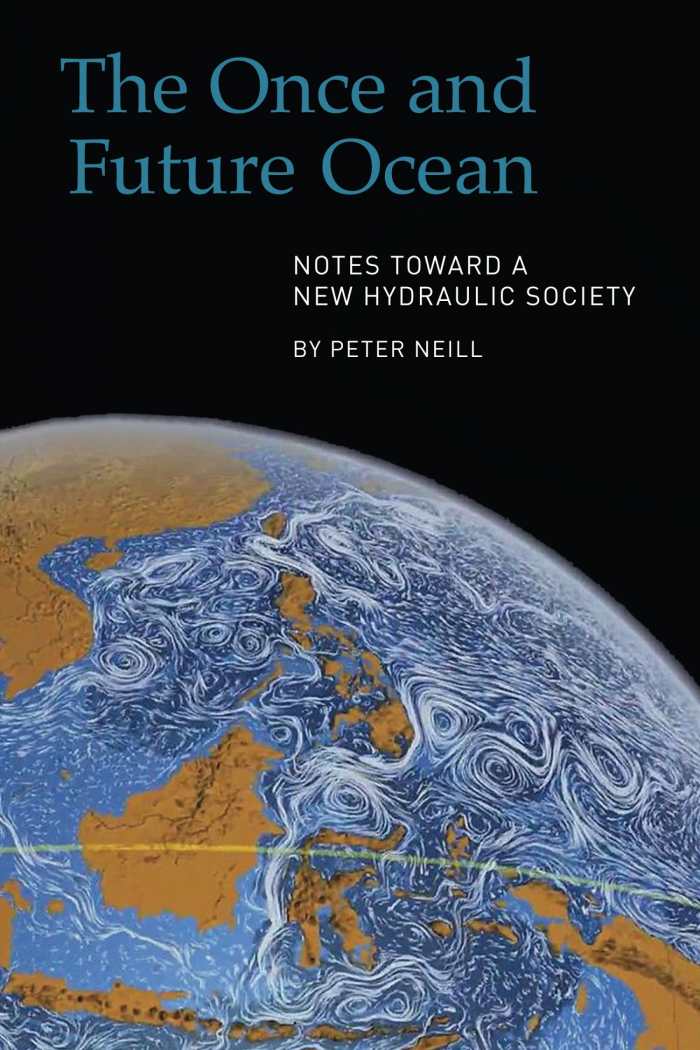
Peter Neill
Leete’s Island Books
Softcover $18.95 (256pp)
978-0-918172-56-3
Buy: Local Bookstore (Bookshop)
Peter Neill is a novelist, a maritime nonfiction writer, and the founder/director of the World Ocean Observatory, and he has seen local ocean problems firsthand. His goal with The Once and Future Ocean, though, is to get the word out about the worldwide crisis our oceans face.
The author believes that ocean degradation is less recognized than that of the land. There is a pervasive myth that the ocean is self-healing—it can absorb all our sewage and trash and be none the worse. Not so, he counters; “the health of the ocean is a direct reflection of the health of the land.” The ocean’s ailing condition manifests itself through overfishing, acidification, sea level rise, polar ice melt, and coral reef die-offs. The irony is that climate change, which is generally accelerated by richer countries, may have the greatest effects on poor, low-lying countries like Bangladesh and Vietnam. At the same time, developed areas like São Paulo and California face freshwater shortages as well.
The book paints quite the sobering picture, and Neill acknowledges how difficult it can be to have hope. However, he offers down-to-earth strategies for how governments and individuals can tackle what seems insurmountable. First of all, remove pro-consumption subsidies and enforce water-related regulations. An understanding of the water cycle should also contribute to new water harvesting and management technologies. Citizens can call for increased recycling, especially of plastics. An awareness of one’s “water footprint” is essential—the “Citizens of the Ocean” online pledge includes a helpful set of personal resolutions to sign up to. “We must hold ourselves accountable,” Neill charges readers in this powerful, impassioned book.
REBECCA FOSTER (August 26, 2016)
The Man Who Thought He Owned Water
On the Brink with American Farms, Cities, and Food
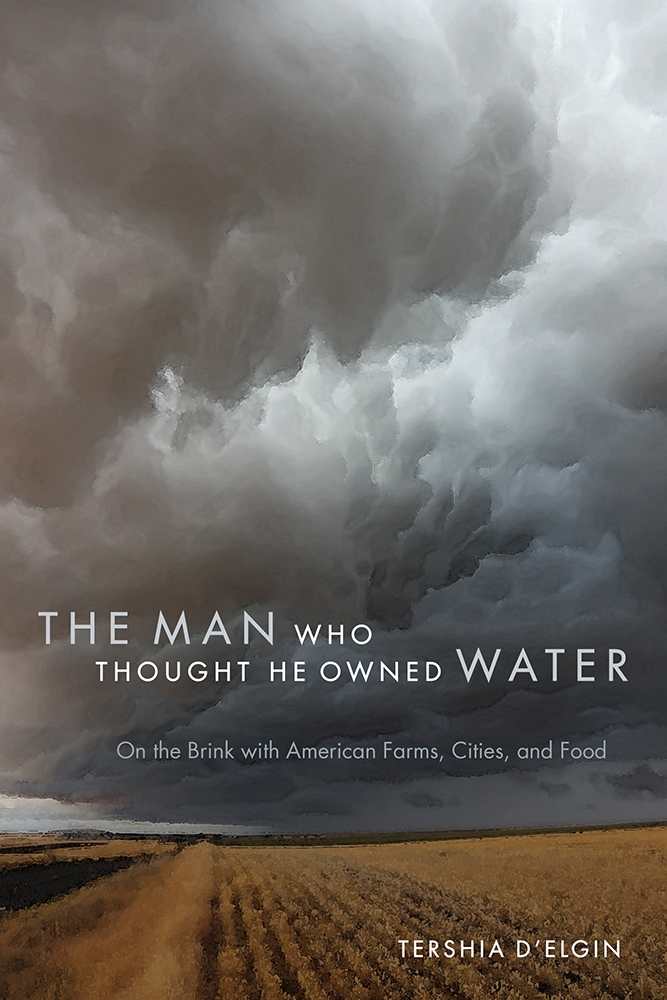
Tershia d’Elgin
University Press of Colorado
Softcover $29.95 (288pp)
978-1-60732-495-9
Buy: Local Bookstore (Bookshop)
San Diego journalist Tershia d’Elgin became keenly aware of her family’s water footprint on her father Bill’s Colorado farm. William Eaton Phelps had to grow up quickly: his parents left him in Denver while his father was stationed in DC during World War II. Bill eloped young and worked as a milkman and real estate salesman before buying land beside the South Platte River in the 1960s. There at Big Bend Station, he grew sugar beets and corn and kept cattle and turkeys.
All is not smooth sailing on a farm, d’Elgin learned. Buying water rights is not the straightforward affair Bill expected. Neighbors’ squabbles over claims require rulings from special water judges, and, after a drought, wells can be shut down with little notice. At the other extreme is the region’s occasional flooding. “The farm is to my mind a heaven,” she writes, but the reality “out the window is a hell.”
Through her experience, especially as the farm’s caretaker after her father’s death, d’Elgin explores the ever-changing world of water regulations and the impact of industrial agriculture, offering helpful definitions and statistics in inset boxes. Growing alfalfa, building an artificial recharge pond, and reinforcing a cottonwood bank were small steps that helped her farm bounce back. In one standout chapter, she investigates the disappearance of local frogs and asks what can be done to restore their wetland habitat.
“Each of us mistakenly thinks ours is a world apart,” d’Elgin notes, but the truth is that water is a shared resource rather than private property. The Man Who Thought He Owned Water, an unusual family memoir cum ecological treatise, brings home the complications of water scarcity.
REBECCA FOSTER (August 26, 2016)
Terra Preta
How the World’s Most Fertile Soil Can Help Reverse Climate Change and Reduce World Hunger
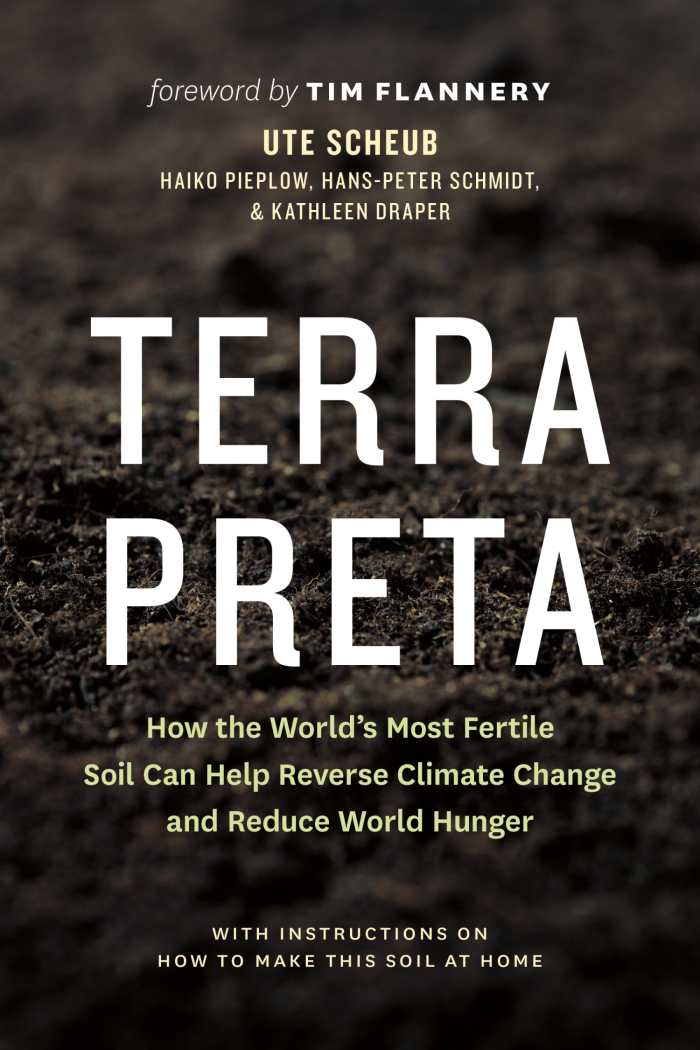
Ute Scheub
Haiko Pieplow
Hans-Peter Schmidt
Kathleen Draper
Greystone Books
Softcover $16.95 (208pp)
978-1-77164-110-4
From the Portuguese “black earth,” terra preta refers to a rich soil composed of humus (decomposed organic substances) and biochar (carbon derived from charcoal). “Nowadays, fertile soil disappears 10 to 100 times quicker than it can regenerate,” the authors of Terra Preta reveal. Industrial agriculture strips away humus and contaminates soil with pesticides, leaving it dusty and lifeless—total regeneration of our soil is necessary.
In the 1960s, archaeological evidence proved that terra preta production was known to the original inhabitants of the Amazon region. Many Asian cultures have also used charcoal in agriculture. The authors survey some recent large-scale terra preta initiatives, including the Stockholm Biochar Project. However, terra preta can also be created for home gardening, incorporating compost and cooked food waste. To that end, the book includes a recipe with step-by-step instructions, along with a diary of one Berlin woman’s efforts to make her own terra preta. Her newly fertile soil produced garden harvests two months early. Along with agricultural yields, some of the modern benefits of terra preta include carbon sequestration and inactivation of E. coli.
The most controversial ingredient of terra preta is human waste. Although the authors stress that this is optional, they do encourage you to “upcycle your own excrement.” Reusing human waste was common among the Maya, ancient Greeks, and Romans. Urine is particularly nitrogen-rich, while feces fermented with biochar and buried under compost is freed from bad bacteria and odors. The “humanure” each person produces in a year could fertilize 100–1000 m2 of cropland.
This is the kind of creative thinking the world needs, in a practical guide that combines historical examples with cutting-edge ideas.
REBECCA FOSTER (August 26, 2016)
Rebecca Foster

